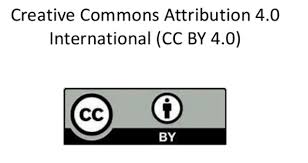Status of handling, processing and microbial quality of meat at Dhaka, Chittagong and Sylhet division in Bangladesh
DOI:
https://doi.org/10.47440/JAFE.2023.4205Keywords:
Meat, Quality, Safety, Handling, Processing, MicrobiologicalAbstract
The study was conducted to know the present status of meat handling and processing facilities in Dhaka, Chittagong and Sylhet Divisional cities and to assess the microbial condition of meat. Meat quality is adversely affected by careless handling conditions at the slaughtering places as well as in the meat markets or shops. Slaughterhouses of divisional cities along with one major district of each division were surveyed. Five butchers from each district were interviewed. A self-administered questionnaire designed to assess “Knowledge” and “Practice” of public hygiene measures was answered by each butcher (n=30). From the study it is obtained that, animals slaughtered in the slaughterhouses were 71.43%. Only 6.67% butchers (n=30) had proper knowledge about hygienic meat where 66.67% had partial knowledge and 26.66% of them had no knowledge about hygienic meat production. Almost 100% slaughterhouses are lack of hygiene and sanitary facilities. Only 7.1% butchers attended training programs and others have no training on slaughtering practices. Veterinary surgeon checks 26.67% of the slaughterhouses where as 16.67% are checked by untrained meat inspectors of the municipality and no checking at 56.67% slaughterhouses. Slaughter act was not implemented due to lack of training and improper facilities. About 96.6% slaughterhouses have no or very poor lairage facilities. About 89.9% animals are not checked after slaughter to identify sick animals which is a great threat to meat consumption. Consumer perceptions showed that, 3.33% of the consumers (n=30) had knowledge about hygienic meat, 93.33% had partial and 3.33% had no knowledge about hygienic meat production. From the microbial assessment it showed that TVC at Dhaka, Chittagong and Sylhet divisions were similar and these were 4.53±0.28 log cfu/g, 4.45±0.57 log cfu/g and 4.40±0.16 log cfu/g respectively. TCC at Dhaka, Chittagong and Sylhet divisions were different and these were 2.70±0.36 log cfu/g, 1.56±0.11log cfu/g and 2.10±0.09 log cfu/g respectively. Both cases selling point count showed higher bacterial count. Presence of Staphylococcus spp. and Salmonella spp. were determined. Both types were found in the samples of the divisional cities. The present study indicate that sustainable capacity building should be introduced including training of veterinarians, meat inspectors and butchers as well as building of slaughter facilities. Government policies on slaughter procedures should be implemented.






 Publisher:
Publisher: 